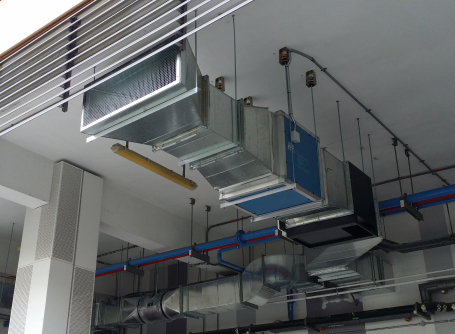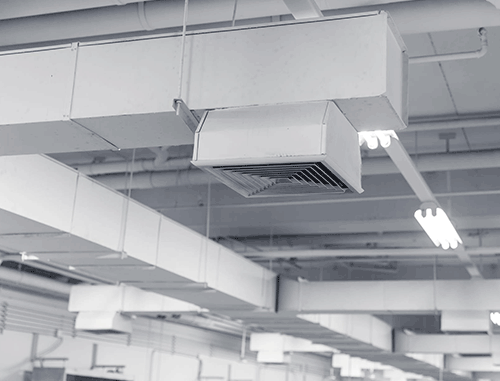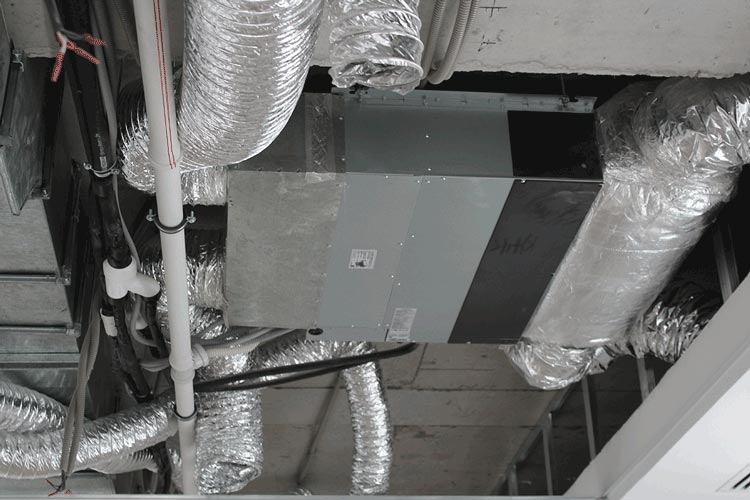Installation
|
| Installing a heating, ventilation, and air conditioning (HVAC) system is a significant investment that ensures comfort, energy efficiency, and air quality in residential, commercial, or industrial spaces. Whether it's a new installation or replacing an old system, proper planning and execution are essential for a successful outcome. |
| |
 |
| |
Benefits of Professional HVAC Installation
|
- Expertise: Professionals ensure the system is installed according to manufacturer specifications and local codes.
- Efficiency: Proper installation maximizes energy efficiency and minimizes operational costs.
- Safety: Certified technicians mitigate risks associated with electrical, gas, and refrigerant systems.
|
|
|
| |
 |
| |
Maintenance Tips After Installation
|
- Filter Replacement: Change filters regularly to maintain air quality and system efficiency.
- Annual Inspections: Schedule professional maintenance to address wear and tear and prolong system lifespan.
- Duct Cleaning: Clean ducts periodically to prevent dust and allergens from circulating.
|
|
|
| |
 |
| |
Choosing the Right HVAC Installer
|
- Look for licensed, insured, and experienced contractors.
- Check reviews and testimonials for reliability.
- Request detailed estimates and ask about warranties and after-sales services.
|
|
|
| |
Key Steps in HVAC Installation
|
|
1
|
|
Assessment and Planning
|
|
| |
- Site Inspection: Analyze the space to determine heating and cooling needs, focusing on factors like square footage, insulation, windows, and climate.
- System Selection: Choose the right HVAC system type—central air, ductless mini-splits, heat pumps, or furnaces—based on efficiency, budget, and specific needs.
- Energy Considerations: Opt for energy-efficient systems with high SEER (Seasonal Energy Efficiency Ratio) or HSPF (Heating Seasonal Performance Factor) ratings to save on utility bills.
|
|
|
|
|
| |
- Permits and Codes: Secure necessary permits and ensure compliance with local building codes.
- Ductwork and Layout: Design ductwork (if required) to provide even airflow throughout the space.
- Utility Checks: Verify the electrical supply, gas lines, or other utilities to accommodate the new system.
|
|
|
|
|
| |
- Equipment Setup: Install the main components such as the furnace, air handler, condenser, evaporator coil, or heat pump.
- Duct and Vent Connections: Install or modify ductwork and vents for efficient air distribution.
- Thermostat Installation: Install and calibrate a thermostat, considering programmable or smart options for enhanced control.
- Refrigerant and Electrical Connections: Ensure proper refrigerant levels and secure electrical wiring to power the system safely.
- Sealing and Insulation: Seal ducts and add insulation to prevent energy loss.
|
|
|
|
4
|
|
Testing and Calibration
|
|
| |
- System Testing: Check for airflow, temperature regulation, and system efficiency.
- Leak Detection: Inspect refrigerant lines and ductwork for leaks.
- Calibration: Adjust settings for optimal performance and energy efficiency.
|
|
|
|
5
|
|
Post-Installation Steps
|
|
| |
- Cleanup: Clear debris and ensure the installation area is tidy.
- User Guidance: Educate the homeowner or facility manager on system operation and maintenance.
- Warranty Registration: Register the system with the manufacturer to activate the warranty.
|
| |
| A properly installed HVAC system is a cornerstone of comfort and energy efficiency. Partnering with a qualified installer and following maintenance best practices ensures years of reliable performance. |